Tech News
-
MSI announces accelerated GAMING X+ series
Play Hard, Stay Silent
As the world’s leading GAMING graphics card vendor, MSI is proud to announce a new line of graphics cards based on the award-winning GAMING X series. Loaded up with faster graphics memory, the new GAMING X+ series provide an additional boost to graphics performance for smooth gameplay. Built around NVIDIA’s GeForce® GTX 10 series GPUs, the MSI GeForce® GTX 1080 GAMING X+ 8G and GeForce® GTX 1060 GAMING X+ 6G use the full force of the TWIN FROZR VI cooler, allowing for higher core and memory clock speeds for increased performance in games. The well-known shapes of the stunning TWIN FROZR cooler are intensified by a fiery red GAMING glow piercing through the cover, while the MSI GAMING dragon RGB LED on the side can be set to any of 16.8 million colors to match your mood or build. A completely new custom PCB design using Military Class 4 components enables higher overclocking performance to push your graphics card to the max. The classy matte black solid metal backplate gives the card more structural strength and provides a nice finishing touch.
TWIN FROZR VI Thermal Design
As MSI’s best thermal design to date, TWIN FROZR VI has raised the bar of Graphics Card air cooling. TORX Fan 2.0 is the enhanced version of the patented TORX Fan technology which generates 22% more air pressure for better cooling performance while further reducing noise levels. On the GeForce® GTX 1080 GAMING X+, the new fans are equipped with Double Ball Bearings to ensure lasting smooth and silent operation. Connected to the huge heatsink are 8mm copper heat pipes with a squared shape at the bottom for optimal heat transfer from the solid nickel-plated copper baseplate combined with Premium Thermal Compound X to keep the Pascal powerhouse cool.MSI Gaming App
The MSI Gaming App allows gamers to quickly switch between OC, Gaming and Silent performance modes, depending on their needs. The latest version of MSI Gaming App features One-click to VR, which instantly optimizes your PC for the best Virtual Reality experience. It also includes host of premium features like EyeRest to improve image quality and Dragon Eye which allows you to watch a YouTube video or stream while gaming. Last but not least, the Gaming App features a LED control tab, allowing gamers to choose from 5 unique lighting modes to set the right ambience for their gaming sessions with just one click.Specifications
GTX 1080 GAMING X+ 8G
GPU GP104-400
Core Clock (OC Mode) 1911 / 1771 MHz
Memory size/type 8GB GDDR5X
Memory speed 11 Gbps
Thermal design TwinFrozr VI w/ ZERO FROZR
Dimensions 279 x 140 x 42 mm
Connectivity DisplayPort x 3 / HDMI / DL-DVI-D -
EVGA GeForce GTX 1080 FTW2/SC2 - Now with 11GHz Memory
April 20th, 2017 - The award winning EVGA GeForce GTX 1080 FTW2 and SC2 are now upgraded to 11GHz memory giving a full 352GB/s of memory bandwidth for improved performance. In addition, this update is available as a free performance upgrade for existing card owners. More details on how existing card owners can update here.
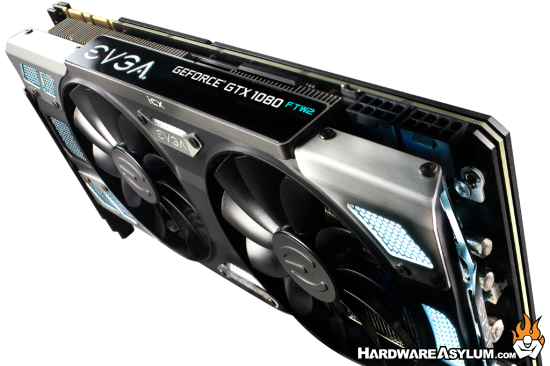
Of course, the EVGA GeForce GTX 1080 FTW2 and SC2 also comes loaded with EVGA iCX Technology, which gives you:
- iCX has 9 Thermal Sensors & Multiple MCUs
- Asynchronous fan control
- Full Control with EVGA Precision XOC
- Interactive Cooling with thermal display system
- Optimized airflow with new heatsink design.
Learn more at http://www.evga.com/articles/01104/evga-geforce-gtx-1080-ftw2-sc2-11gbps/
-
Phanteks Glacier 1080 GPU Waterblock @ techPowerUp
These blocks were announced during CES 2017 and I'm glad to see they are hitting the review sites. Their kits include more than just GPU blocks and feature a full line of fittings and CPU blocks.
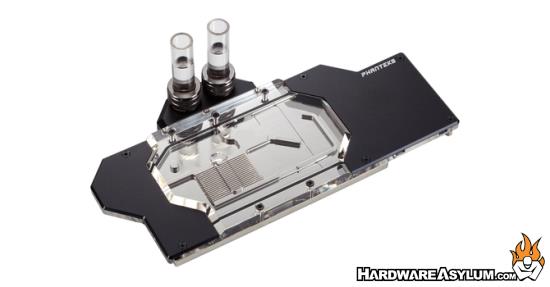
The Glacier GTX 1080 waterblock is among Phanteks' first ever offerings to the DIY watercooling market. It features integrated RGB lighting, an acrylic top with aluminum side covers, nickel-plated copper cold plate, and a split central flow design scheme for low coolant flow restriction.
Low restriction usually means lack luster cooling so it will be interesting to see how these blocks do in terms of temperature performance and if fully parallel loops are now a viable option.
-
Bitspower Summit EF-X CPU Waterblock @ techPowerUp
For those of you exploring the world of watercooling your choice in waterblock can either make you a performance stud in the gaming room or the limp noodle of shame in your favorite online forum. Because of this you need to make for certain that your waterblock choice is not only socially acceptable but impressionable on the opposite sex.
According to TechPowerUp the Bitspower Summit EF-X and pretty darn limp with a few perks to help you get the performance numbers up.
or something like that

Bitspower has not enjoyed much success in the sector of CPU waterblocks, owing to average performance and high product cost with limited customization. They aim to change this in 2017 with the new Summit EF that promises to run at up to 6°C less than before; it will also come with top options in acrylic, nickel-plated copper, and a special gold-plated copper edition.
So, you wanna know a secret about CPU waterblocks?
They are all about the same, they all are using microfin construction these days so the trick is to pick one that not only looks good but is also friendly on the pocketbook. If you are dead set on making sure you have the best performance you'll want to not only look at reviews but also inspect the construction because some designs perform better simply due to how water is routed through the block.
-
Gigabyte Aorus GeForce GTX 1080 Ti 11GB Review: A Custom, Overclocked Beast
During the Aorus launch event at CES Gigabyte was showing some pretty amazing video card designs including the Aorus Gaming edition with a new triple fan cooler and copper heatsink embedded in the video card backplate.
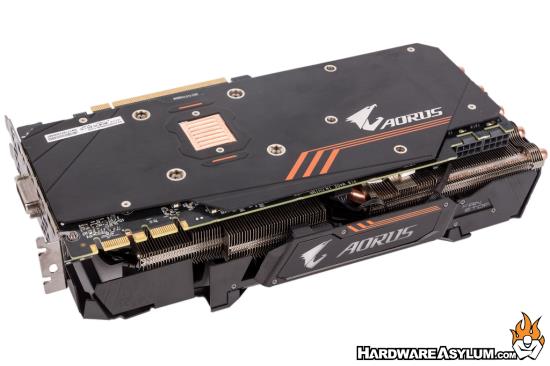
A very cool design and it works quite well too. Another cool feature of the Aorus gaming cards is their dedication to VR with the inclusion of an internal HDMI port you can route to the front of your case for a VR headset.
NVIDIA shook up the top of the graphics card market a couple of weeks back with the release of the GeForce GTX 1080 Ti. In its stock, Founder’s Edition form, the GeForce GTX 1080 Ti proved to be the fastest consumer-class graphics card available, but that didn’t stop NVIDIA’s board partners from quickly announcing custom versions packing even more horsepower. Case in point: The beastly Gigabyte Aorus GeForce GTX 1080 Ti 11GB we will be showing you here. The Gigabyte Aorus GeForce GTX 1080 Ti 11GB is the first, fully-custom, factory-overclocked (and ready to rock) GTX 1080 Ti to hit the lab, and we’ve just finished putting it through its paces.
This is just the start of the new GTX 1080 Ti video card launches and I fully expect there to be some monster cards on the horizon.
-
noblechairs EPIC Series Gaming Chair @ techPowerUp
When seated at your desk there are basically two points on your body that keep you from falling down. Your feet and that region between your legs and spine. One of these touches the floor while the other is often supported by a chair with varying degrees of softness and comfort.
Sit long enough and that hind region will begin to get tired and request that you get up and move around. But, what if you are on a 20 round kill streak? You can't "just get up" no, you need to keep pressing on and see how far you can take it.
To help you get the most from your posterior support it is essential that you have a quality chair. Personally I prefer the Herman Miller Aeron chair and have for over a decade now. It might not have "gaming" in the name or come with fancy LED lights or resemble a racing seat but it is pretty darn comphy and helps to identify me and my dot.com roots.
For those of you not old enough to know about the dot com era and the importance that the Aeron had in establishing dominance in the modern office you may have to consider one of the new "tuner" style gaming chairs like the Nobelchairs EPIC that TechPowerUp has recently reviewed.
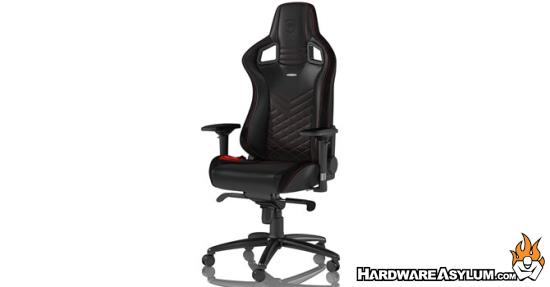
A good chair is the ideal piece of equipment for every hardcore gamer or users who spends lots of hours in front of their PC. The noblechairs EPIC series looks quite interesting for the money it asks, offering good quality and great comfort.
I think the only thing missing is a seat belt, floor pan, engine, transmission, wheels, tires and sweet exhaust. Oh wait, I forgot this is a gaming chair not a racing seat attached to a rolly staind.
#mybad
-
Thermaltake New TT Premium Concentrate Series and C1000 Pure Clear Coolant
Create Your Own Color.Experience the Excitement of Color Mix & Match
Taipei, Taiwan-April 11th 2017- Thermaltake, a leading brand in PC cooling solutions, has launched Thermaltake TT Premium Concentrate Series (Blue/Red/Green/Acid Green/Orange/Yellow/Purple/Black) and the C1000 Pure Clear Coolant, giving users different ways to create a preferred coolant color without compromising on thermal performance. Specially designed to be used in all water cooling systems, the TT Premium Concentrate Series is a ready-to-mix, anti-corrosive and fully biodegradable concentrate with 8 colors that allows PC enthusiasts to customize the coolant color whilst protecting the cooling components and the environment. The TT Premium Concentrate Series is recommended for use with the C1000 Opaque White Coolant or the latest C1000 Pure Clear Coolant. The C1000 Pure Clear Coolant can also be utilized as a transparent coolant. This high performance new member is made in Germany, virtually odorless and non-flammable, plus it features anti-corrosion protection and heat-transfer medium for PC water-cooling and superb protection for copper, nickel, brass, and aluminum. The TT Premium Concentrate Series and the C1000 Pure Clear Coolant will be available to order at select resellers soon. The product availability and price vary by country and region, please contact the local Thermaltake sales representative for further information.
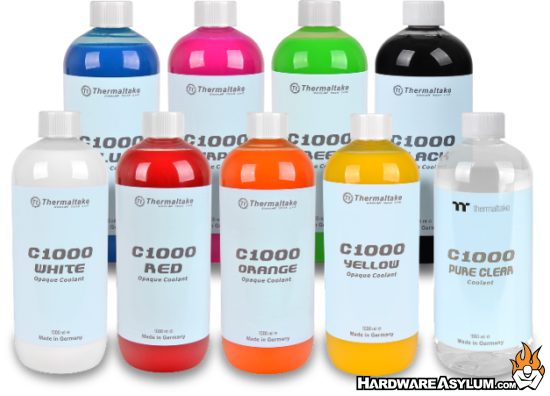
Exclusively “Tt LCS Certified”
Tt LCS Certified is a Thermaltake exclusive certification applied to only products that pass the design and hardcore enthusiasts standards that a true LCS chassis should be held to. The Tt LCS certification was created so that we at Thermaltake can designate to all power users which chassis have been tested to be best compatible with extreme liquid cooling configurations to ensure you get the best performance from the best features and fitment.Features of the TT Premium Concentrate Series:
German-Made Anti-Corrosive Solution
Being non-flammable, the TT Premium Concentrate Series is a ready-to-mix cooling solution with at least 2 years shelf life in airtight containers, providing great performance while preventing the entire cooling system – copper, brass, nickel, and aluminum – from corrosion.Biodegradable Material
The TT Premium Concentrate Series is classified in water hazard class 1 (low-rate endangering) according to German water hazard regulations. The product is environmentally friendly and readily biodegradable.Vivid Application
The TT Premium Concentrate Series suits all water cooling systems. Featuring anti-freezing, anti-rusting, and water scale prevention, the TT Premium Concentrate Series brings vivid colors into the Thermaltake C1000 Opaque Coolant White/C1000 Pure Clear Coolant to deliver great thermal efficiency and further reduce the temperature of the system.Features of the Thermaltake C1000 Pure Clear Coolant:
German-Made Anti-Corrosive Solution
Being non-flammable, the C1000 Coolant Series is a ready-to-use cooling solution with at least 3 years shelf life in airtight containers, providing great performance while preventing the entire cooling system – copper, brass, nickel, and aluminum – from corrosion. Additionally, it can be used with the water temperature between 165?(Boiling Point) and -20?(Freeze Point).Biodegradable Material
The C1000 Coolant Series is classified in water hazard class 1 (low-rate endangering) according to German water hazard regulations. The product is readily biodegradable.Easy Bottle Filler Design
Designed with easy bottle filler, users can fill the coolant into all systems easily through the spout.Vivid Application
The C1000 Coolant Series is designed specifically for PC liquid cooling systems. Featuring anti-freezing, anti-rusting, and water scale prevention, the C1000 Coolant Series delivers great thermal efficiency and further reduce the temperature of the system.For more details on the Thermaltake TT Premium Concentrate Series and the C1000 Pure Clear Coolant, please visit:
TT Premium Concentrate Blue
TT Premium Concentrate Red
TT Premium Concentrate Green
TT Premium Concentrate Acid Green
TT Premium Concentrate Orange
TT Premium Concentrate Yellow
TT Premium Concentrate Purple
TT Premium Concentrate Black
C1000 Pure Clear Coolant -
Corsair Gaming K63 Compact Mechanical Keyboard @ Bjorn3d
Corsair is a pretty big name in the aftermarket computer world and just to think it all started with a memory module. Now days they are into everything from door stops to air movers with just enough RGB lighting to give Las Vegas Blvd a run for its money.
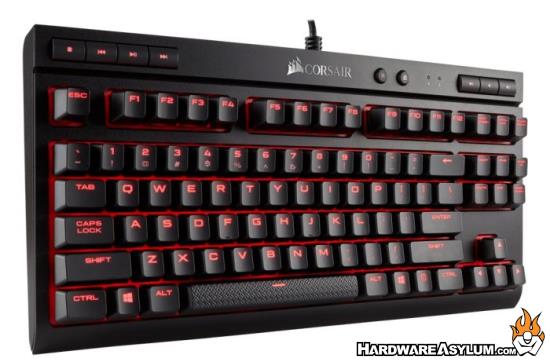
The latest edition to Corsair’s extensive keyboard lineup comes in the form of the K63 compact mechanical keyboard. Aimed at the gaming crowd, the K63 is an entry level keyboard hitting the market at a price point of $80. Now, you may be asking yourself: Doesn’t Corsair have multiple budget-based options like the K65 or the K40? What about the K55 with RGB capability? Why should I be interested in the K63? The K63 shines in comparison to the other budget options with it’s bed of 100% Cherry MX Red mechanical switches, compact tenkeyless design, red per-key LED backlighting and support for Corsair’s CUE software. The K63 is the only option in Corsair’s budget lineup to offer this combination of features. That also makes the K63 the cheapest option from Corsair to come with genuine mechanical switches.
Talk about a dinky small keyboard, it is almost cute if it wasn't for that pesky thing that nobody likes. Of course it comes with per key LED backlighting, cause: reasons and I'm sure it will be marketed heavliy on reddit and sent to every YouTube tech channel currently active in that community.
#justsayin
-
ASRock X370 Gaming Professional Fatal1ty review @ Guru3D
Honestly I actually thought that ASRock dropped the Fatal1ty brand but, it would seem that I am wrong. The X370 is a great chipset for the AM4 and when combined with features that gamers need it creates a board gamers want.
Or at least that is the idea.


For our next X370 review we look at the brilliant ASRock X370 Gaming Professional Fatal1ty. This enthusiast class line of Ryzen motherboard is not just stylish, it has 5 Gbps Ethernet, AC WIFI, dual M.2 slots and every feature you could wish for on the high-end Ryzen platform.
I have a couple of X370 boards in the lab and am hoping to finish up my first Ryzen CPU review later this week. So, stay tuned.
-
The New NVIDIA Titan Xp is Here and it is Good!
More Extreme in Every Way: The New Titan Is Here – NVIDIA TITAN Xp
NVIDIA announced a new Pascal based graphics card today and kept their blog post short and sweet.
-- snip --
If you need all the power you can get, our new NVIDIA TITAN Xp is the card you need to have.
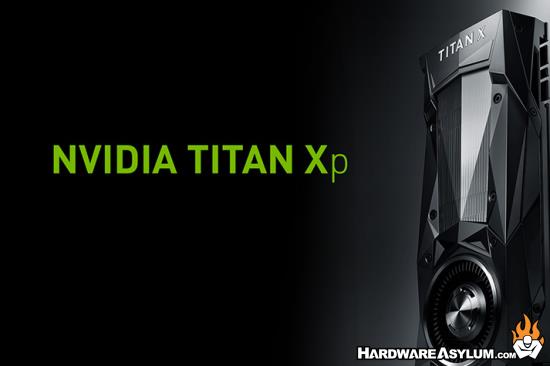
Introduced today, the Pascal-powered TITAN Xp pushes more cores, faster clocks, faster memory and more TFLOPS than its predecessor, the 2016 Pascal-powered TITAN X.
With the new TITAN Xp we’re delivering a card to users who demand the very best NVIDIA GPU, directly from NVIDIA and supported by NVIDIA.
Key stats:- 12GB of GDDR5X memory running at 11.4 Gbps
- 3,840 CUDA cores running at 1.6GHz
- 12 TFLOPs of brute force
This is extreme performance for extreme users where every drop counts.
Open to Mac Community
Speaking of users, we’re also making the new TITAN Xp open to the Mac community with new Pascal drivers, coming this month. For the first time, this gives Mac users access to the immense horsepower delivered by our award-winning Pascal-powered GPUs.
TITAN Xp is available now for $1,200 direct from nvidia.com, and select system builders soon.-- snip --
So, the real question is. How is this card different? If you pull up the Titan X and Titan Xp spec page(s) on Nvidia.com you can get a pretty good idea as to what changed. The orginial Titan X came with 3584 CUDA cores whereas the new Titan Xp comes with 3840 CUDA cores and an extra 50Mhz on the Boost Clock. Basically more cores and a bit of overclocking. Both cards come with 12GB of memory so, processing power FTW!
- NVIDIA TITAN X
- NVIDIA TITAN XpSadly, and this is rather embarrassing to admit. At the time of the Pascal based Titan X launch there had already been a number of Titan cards including the Titan Z, Titan, Titan Black and now Titan X and Titan Xp. Somewhere in the shuffle I had remembered there was already a Titan X and just added a (p) to the end to denote the difference between the Maxwell Titan X and the Pascal based one.
It would seem I was just ahead of the curve and got confused with the marketing.


